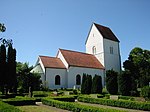The European Spallation Source ERIC (ESS) is a multi-disciplinary research facility currently under construction. The ESS is currently under construction in Lund, Sweden, while its Data Management and Software Centre (DMSC) is situated in Copenhagen, Denmark. The 13 European member countries are partners in the construction and operation of ESS. ESS is scheduled to begin its scientific user program in 2023, with the construction phase set to be completed by 2025. ESS will enable scientists to observe and understand basic atomic structures and forces, which is not achievable with other neutron sources in terms of lengths and time scales. The research facility is located close to the Max IV Laboratory, which conducts synchotron radiation research. The construction of the facility began in the summer of 2014 and the first science results are planned for 2023.
During the operation, ESS will use nuclear spallation, a process in which neutrons are liberated from heavy elements by high energy protons. This is intrinsically a much safer process than uranium fission. This facility was an example of a "long pulse" source (milli-seconds).
The facility consists of a linear accelerator in which protons are accelerated and collide with a rotating, helium-cooled tungsten target, generating intense pulses of neutrons. Surrounding the tungsten are baths of cryogenic hydrogen which feed neutron supermirror guides. The operation is similar way to optical fibres, directing the intense beams of neutrons to experimental stations, where research is performed on a range of materials.
Neutron scattering can be applied to a range of scientific explorations in physics, chemistry, geology, biology, and medicine. Neutrons serve as a unique probe for revealing the structure and function of matter from the microscopic down to the atomic scale, with the potential for development of new materials and processes.
During the construction, ESS became a European Research Infrastructure Consortium, or ERIC, on 1 October 2015.
The European Investment Bank made a €50 million investment in European Spallation Source. This investment is supported by InnovFin-EU Finance for Innovators, an initiative established by the EIB Group in collaboration with the European Commission under Horizon 2020, the EU's research and innovation program.











